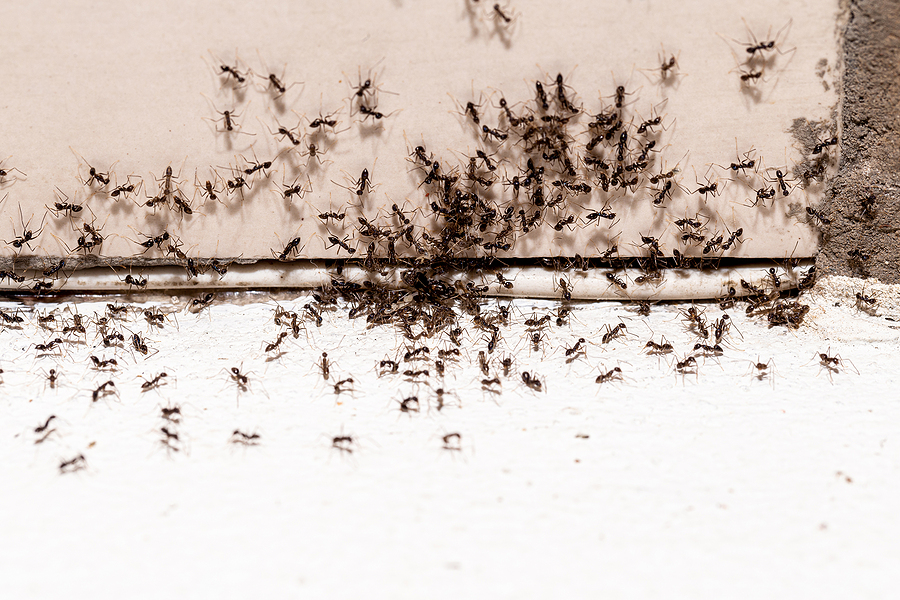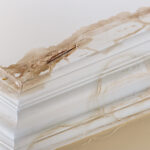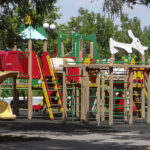Ever found yourself wondering why there’s a sudden line of ants marching across your kitchen counter? Or perhaps you’ve noticed a little pile of dust and debris that seems to magically appear overnight near your baseboards.
It’s not just random; you could be dealing with an ant infestation in walls. This pesky problem isn’t just annoying. It can also cause significant damage to your home if left untreated.
So let’s dive in and explore how to identify and prevent these tiny intruders from turning your home into their playground.
Identifying an Ant Infestation in Walls
Before we can start preventing ant infestations, we need to know how to spot the signs. Here are some signs of ant presence in your walls:
Visible Ants
The most obvious sign of an ant infestation in walls is seeing ants. However, it’s not always easy to spot them. This is because they typically avoid open spaces and prefer to travel along walls and baseboards.
Piles of Debris
As mentioned earlier, you may see small piles of debris near your baseboards or windowsills. These debris are often a mix of ant body parts, dead insects, and dust that the ants have pushed out of their nests.
Rustling Noises
If you hear rustling or crackling noises coming from your walls, it could be a sign of an ant infestation. These sounds are caused by the movement and tunneling of ants within the walls.
Ant Trails
Ants leave scent trails for other ants to follow, which is why you may see a line of them marching across your kitchen counter. If you notice a visible trail leading up or down your walls, there’s likely an ant colony nesting inside.
Hollow-Sounding Wood
Ants, particularly carpenter ants, excavate wood to make their nests, which can cause the wood to sound hollow when tapped. So if you have wooden structures in your home that sound unusually hollow, it might be worth investigating.
Sawdust Piles
If you see small piles of sawdust-like material near your wooden furniture or structures, it could be a sign of carpenter ants. This sawdust, known as frass, is the result of the ants excavating wood to make their nests.
Preventing Ant Infestations in Walls
Now that we know how to identify an ant infestation in walls, let’s discuss how you can keep your home ant-free.
Seal Entry Points
The best way to prevent ants from entering your home is by sealing off any potential entry points. Check for cracks and gaps in your walls, foundations, and windowsills. Fill them with caulk or a similar sealant.
Keep Your Home Clean
Ants get attracted to food sources. So keeping good hygiene in your home is crucial in preventing ant infestations. Make sure to wipe down countertops and sweep or vacuum regularly, especially in areas where food gets prepared or consumed.
Eliminate Moisture Sources
Aside from food, ants are also drawn to moisture. Fix any leaks or plumbing issues in your home. Make sure to dry up any spills or standing water promptly.
Trim Trees and Shrubs
Trees and shrubs act as natural bridges for ants to enter your home. Keep them trimmed away from your walls to prevent easy access for these pests.
Store Food Properly
Ants can easily find their way into unsealed food containers. Make sure to store food in airtight containers and keep them off the ground to prevent ants from getting into your pantry.
Clean Up After Outdoor Activities
If you have been gardening or working on outdoor projects, make sure to clean up any debris and spills promptly. These can attract ants and give them an easy entry point into your home.
Use Natural Repellents
Certain natural substances can deter ants and keep them away from your home. For example, cinnamon, vinegar, and peppermint oil have been known to disrupt ant trails and confuse them.
Using natural deterrents makes it harder for them to find their way back to their nest. Simply spray or sprinkle these substances near suspected entry points.
Regular Pest Control Services
Having a regular pest control service can help prevent an infestation before it begins. Professional pest control companies have experience in locating and sealing off potential entry points. They can apply non-toxic treatments that deter ants from entering your home.
Ensure Proper Ventilation
Proper ventilation is key in preventing ant infestations in your home. Ants, particularly carpenter ants, like humid environments. Therefore, reducing the humidity levels in your home could make it less appealing to these pesky invaders.
One thing you can do is install exhaust fans, especially in areas like the kitchen, bathroom, and laundry room. These fans help vent out the moisture-laden air. They reduce the overall humidity inside your home.
Remove Potential Nesting Sites
Clearing clutter from your home, especially in secluded areas, can prevent ants from establishing a nest. Remember, ants prefer quiet, undisturbed areas for nesting. So regular cleaning and de-cluttering can make your home less attractive to them.
Use Ant Baits Outside
Ant baits can be a useful preventive measure when placed around the perimeter of your home. They attract ants as a food source. This is then taken back to the nest where it poisons and eliminates the colony, preventing an infestation inside your home.
Keep Firewood and Building Materials Away From Home
It’s a good idea to store firewood and building materials well away from your home. These can serve as potential nesting sites for ants, particularly carpenter ants, which are drawn to damp wood. Keeping these materials at least 20 feet away from your home and a few inches off the ground can help deter these pests.
Control Aphids and Other Honeydew-Producing Insects
Some ants, especially sugar ants, are attracted to the sweet substance known as honeydew that’s produced by aphids and other insects. By controlling the population of these insects in your garden or yard, you potentially reduce the food sources for ants. You can make your home less attractive to them.
Follow Our Guide for a Safer Home Today
Tackling an ant infestation in walls might seem challenging. But with the right knowledge and preventative measures, you can protect your home from these tiny intruders.
Remember, the key is early detection and swift action. Ensure your home is clean, well-sealed, and free from potential nesting sites.
Your home is your sanctuary. Don’t let ants turn it into their playground. Follow our guide and work towards an ant-free home today.
Did you find this article helpful? If so, check out the rest of our site for more.
Image Source: BigStockPhoto.com (Licensed)
Related Categories: Home, Reviews








